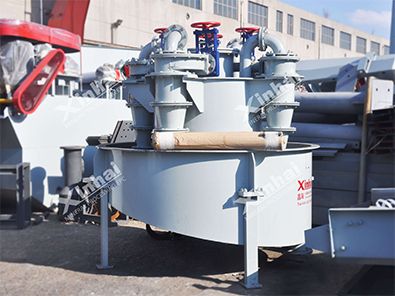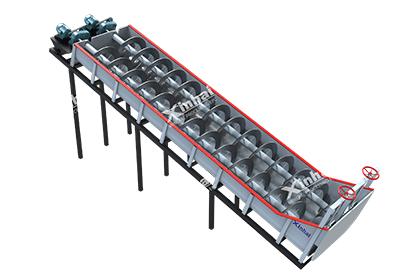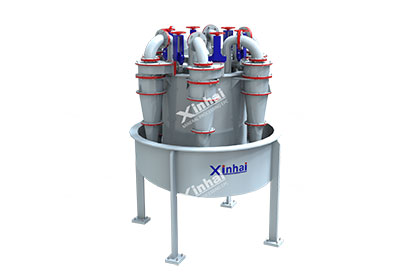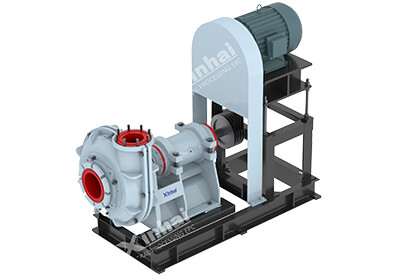Guide of Hydrocyclone and Spiral Classifier
 sharon
sharon
 Nov 13, 2020
Nov 13, 2020
 1308
1308
If you want to know more details about equipment, solutions, etc, please click the button below for free consultation, or leave your requirements!

Classification is one of the important processes in ore dressing. Common classification equipment includes spiral classifiers and hydrocyclones. The 2 kinds of equipment have different classification effects because of their different structures and working principles. This article will introduce the working principle and characteristics of hydrocyclone and spiral classifier.
Let's drive in!
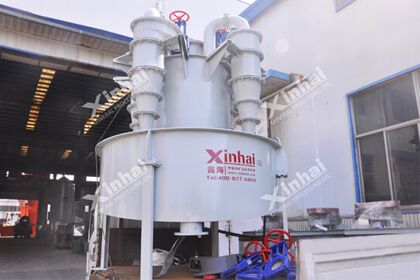
01 Hydrocyclone
Back(1) Working Principle
Under pressure, the pulp enters the cyclone shell through the feeding pipe, and makes a rotary motion in the shell. Coarse particles or dense particles in the pulp move to the periphery due to greater centrifugal force, at the same time flow down with the slurry and finally discharged from cyclone underflow outlet to become sediment. The centrifugal force of the fine particles is small, so fine particles move to the center and discharge by the overflow tube, thus achieving separation of coarse and fine particles.
(2) Merits
Fine classification. The cyclone mainly uses centrifugal force for classification, which is larger than gravity, so the particle size of the classification can be as low as 5 microns. At present, the classification of fine particles mostly uses hydrocyclones.
High classification efficiency. When the classification particle size is as fine as 0.037 mm, the cyclone classification effect is significantly higher than other classification equipment.
Simple structure. No moving parts, easy to cast.
Less space demand. Under the same processing capacity, the hydrocyclone covers an area of about 1/30 to 1/50 of the spiral classifier.
Low cost. Large processing capacity per unit area, easy to operate and maintain.
(3) Demerits
Large power consumption of conveying equipment. The feed pump used by the cyclone consumes a lot of power, which is about 5-8 times that of other classification equipment.
Fast wear of equipment. In particular, the wear around the feed inlet and underflow outlet is the fastest.
Great influence from external factors. The fluctuation of feed pressure, feed concentration and feed particle size affect the classification efficiency of the cyclone

02 Spiral Classifier
Back(1) Working Principle
The grinded pulp is fed into tank from the inlet in the middle of settlement region, and the slurry classification sedimentation area is under the inclined tank. The spiral rotates at a low speed to agitate the slurry, so that the fine particles are suspended to the top and overflow at the overflow dam. And the coarse particles sinks to the bottom of tank, then it is conveyed by spiral to the discharge port. Usually the spiral classifier and the mill form a closed circuit, and the coarse sand is returned to the mill for regrind.
(2) Merits
Simple structure and convenient operation.
Small impact of the feeding capacity fluctuation. The classification efficiency will not drop significantly.
Low production cost. Because of the small power required for their transmission.
Low water content coarse underflow.
Large slope of the sink. It is convenient to form a self-flowing sand return.
(3) Demerits
Coarse classification overflow particle size. In particular, it is difficult to achieve the requirement of overflow particle size-0.074 mm accounting for more than 90%.
The high proportion of useful minerals in the returned sand.
Low classification efficiency.
Easy to wear. The spiral blade and the thrust bearing at the lower end of the spiral are easy to wear, and the maintenance is very inconvenient.
No automatically control. The control parameters are complicated.
03To Wrap Up
BackThe above is the working principle, pros and cons of hydrocyclones and spiral classifiers. In actual production, it is recommended to choose the appropriate classification equipment according to the actual situation. Hydrocyclones are suitable for processing fine-grained materials; if the amount of ore feed is uneven, a spiral classifier should be used.
If you have other questions about the selection of hydrocyclones and spiral classifiers, you can consult the online customer service and leave a message, we will contact you as soon as possible!
 +86 18716000713
+86 18716000713 xlyin@xinhaimining.net
xlyin@xinhaimining.net




 Message
Message Chat Now
Chat Now


